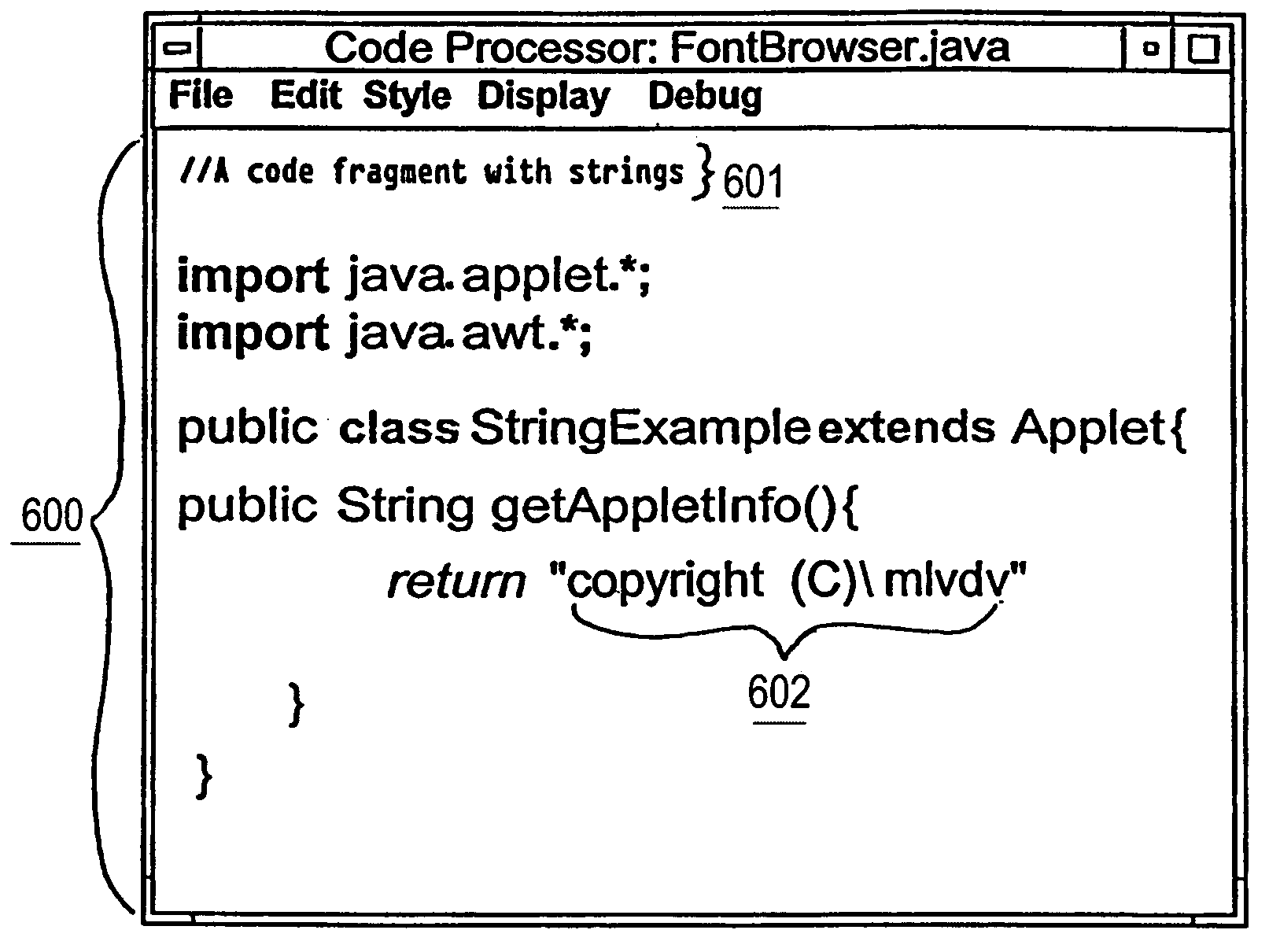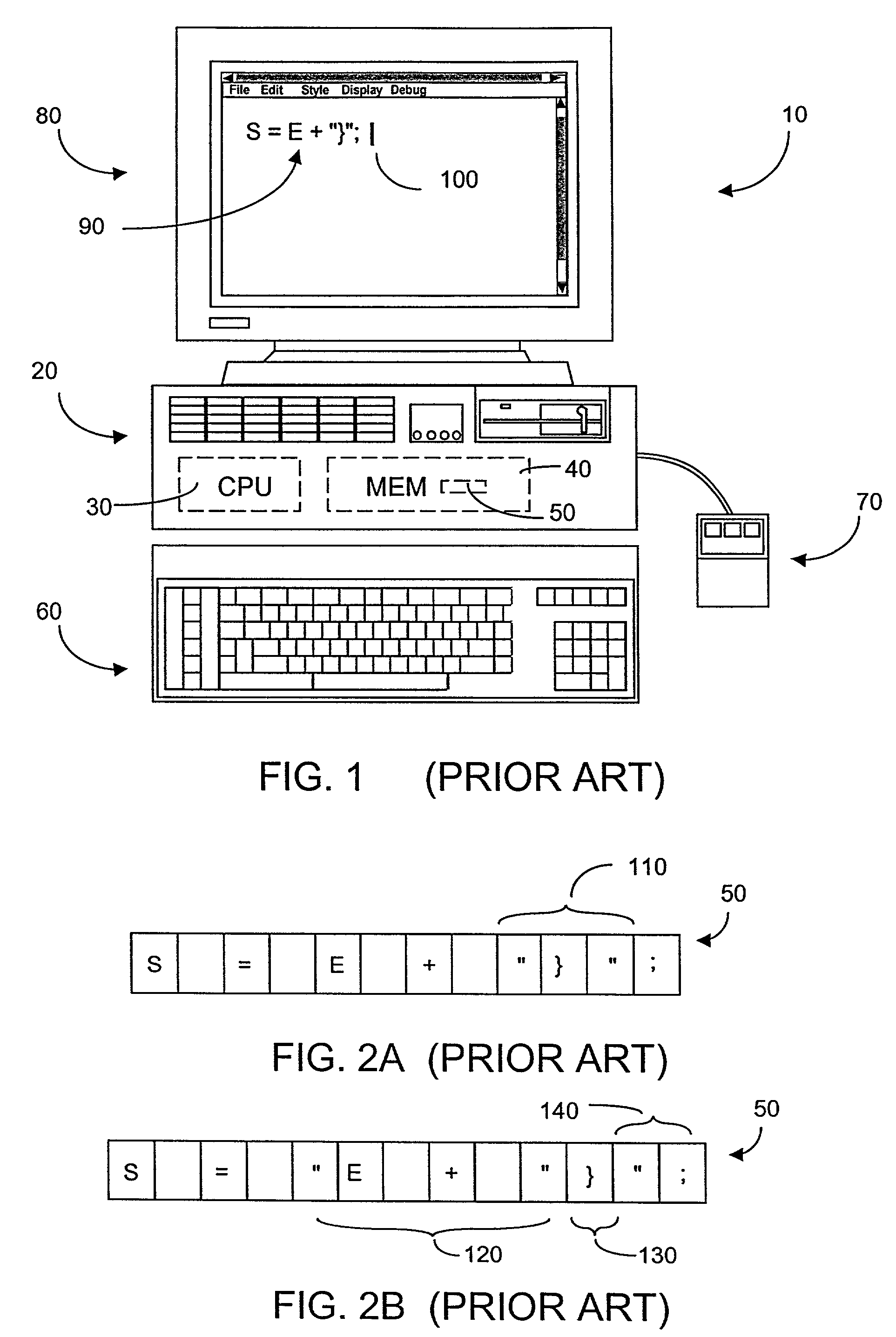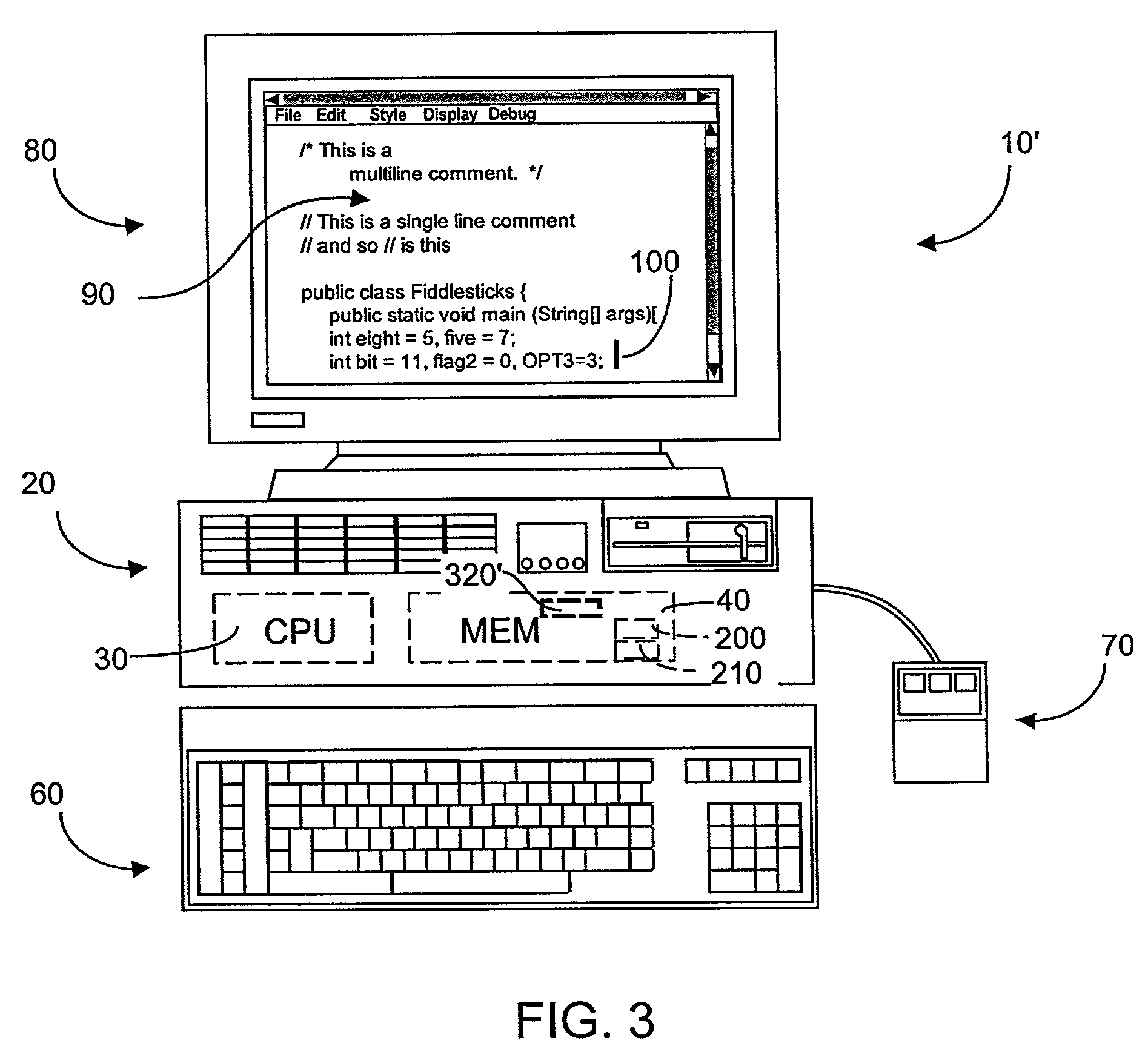Interactive software engineering tool with support for embedded lexical contexts
a software engineering and embedded context technology, applied in the direction of intelligent editors, source code creation/generation, instruments, etc., can solve the problems of difficult for software engineers to interact with such code, and often language-sensitive prior art program editors, which are typically limited in their specialization of behaviors
- Summary
- Abstract
- Description
- Claims
- Application Information
AI Technical Summary
Benefits of technology
Problems solved by technology
Method used
Image
Examples
Embodiment Construction
)
[0043]Exploitations of the techniques of the present invention are many. In particular, a wide variety of software engineering tools that employ aspects of the present invention to facilitate language-oriented behaviors are envisioned. One exemplary software engineering tool with language-oriented behavior is a source code editor that provides advanced program typography based on lexical context. Such a source code editor provides a useful descriptive context in which to present various aspects of the present invention. Nonetheless, the invention is not limited thereto. Indeed, applications to editors, analyzers, builders, compilers, debuggers and other such software engineering tools are envisioned. In this regard, some exploitations of the present invention may provide language-oriented behaviors within suites of tools or within tools that provide functions in addition to manipulation of program code. Similarly, a specific lexical context, e.g., that typical in many programming l...
PUM
 Login to View More
Login to View More Abstract
Description
Claims
Application Information
 Login to View More
Login to View More - R&D
- Intellectual Property
- Life Sciences
- Materials
- Tech Scout
- Unparalleled Data Quality
- Higher Quality Content
- 60% Fewer Hallucinations
Browse by: Latest US Patents, China's latest patents, Technical Efficacy Thesaurus, Application Domain, Technology Topic, Popular Technical Reports.
© 2025 PatSnap. All rights reserved.Legal|Privacy policy|Modern Slavery Act Transparency Statement|Sitemap|About US| Contact US: help@patsnap.com



